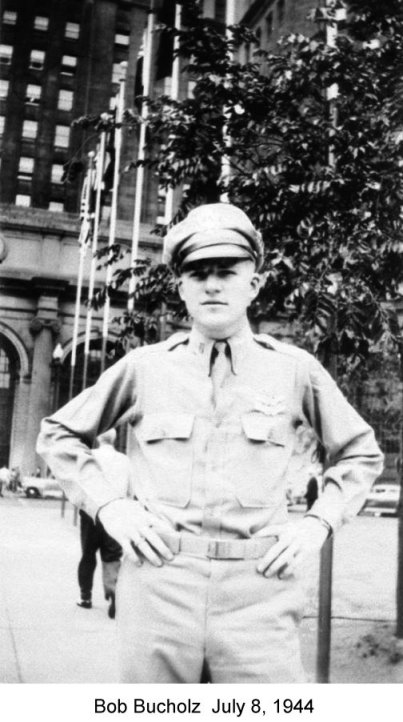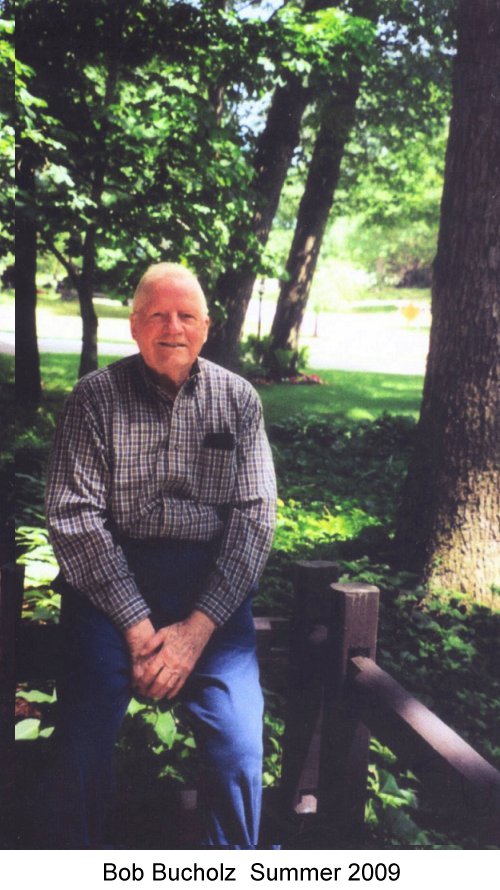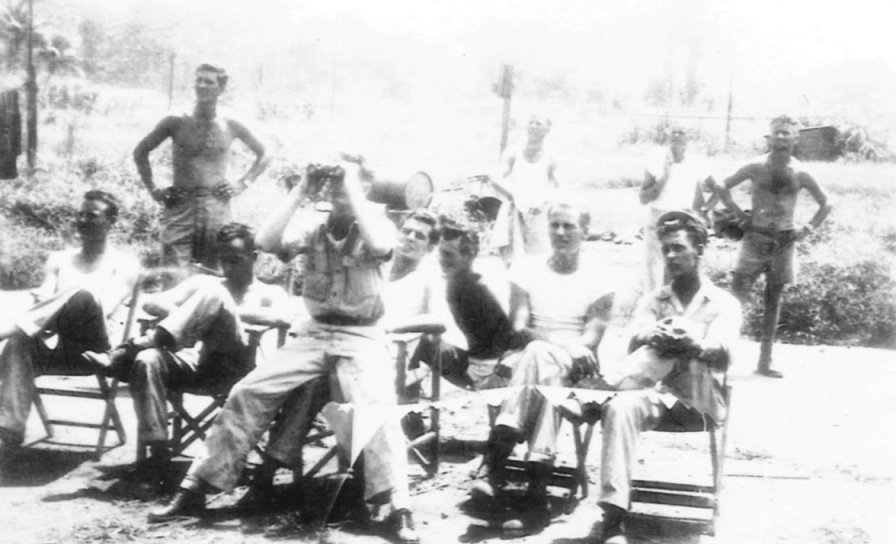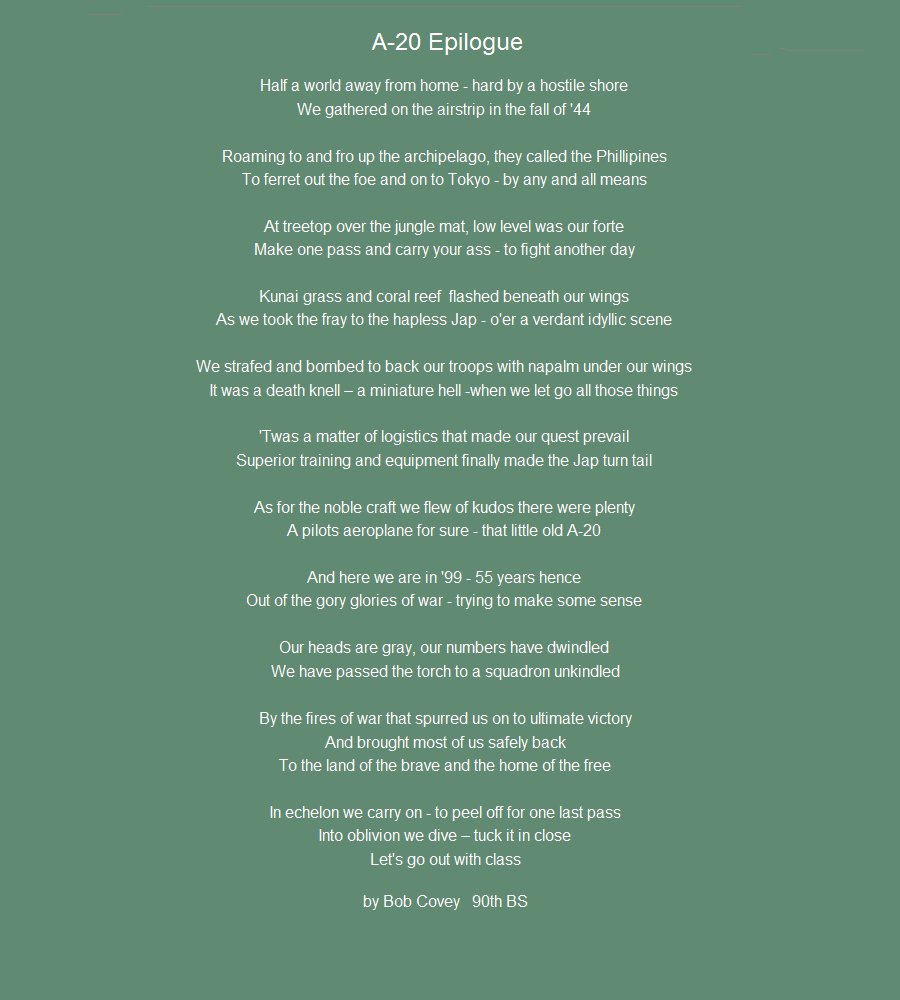In September '44, I was sent on temporary duty from
the 38th BG to the 3rd to perform the lead navigator and bombardier function.
We had a number of medium altitude missions to Babo and Utarom in far west New Guinea. I continued to
ride piggy back in a few adapted A-20s on low level missions all over the
Phillipines and Formosa. I was never transferred back to the 38th,
fortunately, and was made permanent party to the 3rd sometime in early '45. I
considered my assignment to the 3rd to be the best ever. We had a fine group of
pilots and suffered very few losses in my period from Sept. '44 to July 45. I
finished my 52 missions with 2 thrillers in our new A-26s to Formosa. A special pleasure was having a seat, next to the
pilot, on the A-26 [Which seemed a marvelous ship in a lot of
ways]. The one engine performance and the great firepower [16 50 cal. guns]
were reasuring to me as I sweated out my last 2 missions. At low
level my navigation skills were confined to pilotage and the Norden skills were
no longer called for. So that is my story in brief.
I am looking forward to future additions to the website as they evolve under
your hand.
Loved that photo of the B-25 Fat Cat. Brought back memories of my training days
and holing Jap runways in Western
New Guinea. I was the lead
bombardier on a number of these missions-9000 ft--2 minute bomb run-no flak. On
one, three of my pilot squadron mates were sent out after the mission to
photograph runway bomb damage. Clouds at 9000, so they dropped down to 4000 ft.
for a better photo. Suddenly flak took off 5 feet of one wing man's right wing
and the flight leader's fuselage bottom was tattooed with flak holes. So this
quiet little Jap air base still had some firepower in its flak guns at the
lower altitude. Our boys were lucky to get home alive from this photo
"milk run". "You never knew" These strips, Utarom and
Babo, figured prominently in some of the Jap air attacks on our bases as we were
getting established on New Guinea earlier in the war. What was a bit of a
challenge to me was I hadn't touched a Norden Bombsight for 6 months. But I got
the bombs on the target .A bit of a sweat job with the pros in my cockpit and
15 or so A-20s behind us waiting to drop on my bombs leaving the bombbay. It
was no time to show rust in my Norden technique.
Just another set of incidents in our march to Tokyo.
Robert J. Bucholz
Lt. 90th Squadron WWII
Watching What ?
LEYTE TO MINDORO
I thoroughly enjoyed Jack Heyns’ remembrance of wartime Christmases past.
In 1944, about a half dozen enlisted and myself were the last remnant of the 3rd Attack Group to leave Leyte for the move to Mindoro. Space in the boat for the 3rd had been totally exhausted. There was no room for us, a pile of small gear and a tent or two. Somehow we got access to a Jeep and since one of the men was a professional scrounger, we were kept going with C & K rations which he obtained. We literally belonged to no one and spent four days of boredom and concern.
We had heard that the small convey our 3rd Group members were on enroute to Mindoro had been attacked by Japanese aircraft. Supposedly an ammunition ship was blown up taking out a neighboring vessel, but we had no idea if our 3rd Group contingent had been lost or not. We finally got word that we were going to board a ship for a destination unknown.
First we had to load on small personnel craft. We quickly discovered that the small crew had lifted some of our important personal items. I made a quick trip up to Tacloban to see the Harbor Master. He sent military police down to our craft and the lost items were summarily returned to us. Sometime later that day or evening, we loaded onto a large ship, probably an LST.
The next morning we were astounded to find ourselves in the middle of a fleet of nearly 1000 ships, accompanied by 3000 landing craft with over 200,000 men aboard these vessels. Baby aircraft carriers ringed the fleet and 40 U.S. vessels were sunk or damaged by Kamikaze suicide attacks. Enemy submarines also stalked the fleet. In a day or so, our ship had worked its way to the edge of the fleet and after a 300 mile or so trip, we were dropped on the beach at San Jose, Mindoro. The fleet we were in was the mammoth Lingayen, Luzon invasion force, which was larger than most of Eisenhower’s invasion fleets in the European theater.
So that is the saga of a remaining remnant of the 3rd Attack Group that finally made its way to Mindoro. Shortly after our arrival, our planes flew up from Hollandia making our Group whole again. We quickly had missions assigned as this was the start of the 3rd’s Philippine operations that saw us ranging all over Luzon, Panay, Cebu, Negros and Legaspi. Although the Japanese were in retreat, the Group had its share of losses as well as the other Groups in operation.
On a personal note, I finished my 52 missions in July and was on a ship in the middle of the Pacific when the A-Bombs were dropped and the Pacific war finally drew to a close. The San Francisco Bridge was a beautiful sight as we arrived at the U.S.A. The joy was, of course, dimmed by the thoughts of friends who were lost forever.
Bob Bucholz
The Navigator
90th Squadron 3rd Attack Group
The Great Fire
Around mid September , 1944 the 90th Squadron was encamped at Hollandia
N.G. The Japanese were pretty well swept off the North and East coasts of
the island. There were still little pockets of enemy in odd locations.
The western N.G. still had airstrips, like Babo and Utarom, in enemy hands. I
had occasion to fly lead bombardier for 5 or 6 missions to these strips to
disable them with our bombs. Life had slowed down to a crawl around the squadrons. It looked like the next
big campaign would be somewhere in the Philippines. MacArthur had made a solemn
promise that "I Shall Return.
After dinner nightly there would be a movie. About half way up the dirt road
bordering our squadron areas was our movie house. It was an incline with aisles
carved horizontally out of the clay dirt, much like a typical theater balcony.
Near dusk we would all hike to the "cinema", carrying our stools
or crude chairs made out of ammunition boxes. There seemed to be a favorite spot
on the hill for everybodys' seat.
To while away the time until show start., a favorite game was to play
"chase me". A flashlight spot would be directed onto the screen,
alongside the road below. Immediately a number of other light spots
would be directed to the screen by others and the chase was on to catch the
first spot. In its humble way it was actually fun to watch or participate in
this chase.
Near dark somebody in the now full audience flipped a cigarette up over the screen
and into a ditch lining the road. Suddenly there was an audible
"poof" and then a flash of flame that filled the space behind the
screeen. Was this was an enemy attack or what.? The cigarette had landed in the
ditch which was, unbeknownst to us, slightly filled with gasoline which
of course ignited instantly with a major flash.
Instantly a mass of humanity, the attendees, scrambled UP the theater hill to
escape "whatever it was." At the least it was a mighty scare.
The September 30 Third Strike group newspaper reported the incident with this
commentary:
"The fire at the Gp theater uncovered at least one gentleman in the 90th.
By his tactfulness, charm and coolness under fire, he completely swept a young
miss off her feet and carried her to the Gp medics to have her bruises fixed.
She was slightly pushed around when we "gentlemen" began to bypass
everything in our hurry to survive and live to see the Phillipines. Rumors have
it that a OLC has been awarded in Lieu of the 2nd Good Kid Badge to the hero.
A salute to the Group's Medic [all Sqdns] for the efficiency displayed during
and following the fire".
There was no movie that night. We all found paths in the jungle above the
theater and, with lit flashlights, worked our way carefully back to our tents,
the long way.We eventually found out that a leak had sprung up in a gas storage
tank way up in the hills beyond the Group area and worked its way slowly down
the ditch to our location. Nobody knew if the fire traveled back up the ditch
to its source--there only one thought in mind, "get away fast".
So there you have it-a large share of excitement to go along with the
always present thrills of life in A-20s in the treetops.
Gerry, I hope you enjoy this yarn about another day overseas in the 90th. Maybe
a few oldtimers in our organization will remember this wild night.
Bob Bucholz 90th Squadron - The Navigator
Recently you sent me an Email concerning a Bombardiers seating arrangement (solid nose). Originally I was transferred on temporary duty to the 90th squadron from the 38 BG, to serve as lead bombardier on a series of medium altitude missions Subsequently I continued with the 3rd since a return to the 38th BG was never initiated.
A number of A 20s did provide an additional seat behind the pilot. Here a circular body size hole was cut into the life raft deck. The passenger would then use an installed strip for a seat, to ride out the mission. Miscellaneous charts, parachute packs, pencils, etc. were carried on a small shelf behind the pilot There were good viewing windows (each side of the cockpit) and the windshield for the intelligence gathering.
I flew about 45 missions in this arrangement. In my reading I have never seen this set up described in technical terms. However, it did increase hazards for the extra person.
My last missions were flown
in the new Douglas A-26 Invader I used the right hand cockpit
seat. The targets were in Southern
Formosa The flights
were low-level and took 8 hours to complete. As navigator, I had no
particular duties assigned. I noted sightings or interest and did perform
(follow the plane) pilitage navigation. "Just in case".
The above are my recollections in regard to your queries. The A-26 has a long history and there is, I am sure much more information still to be pursued.
Bob " Navigator" Bucholz





